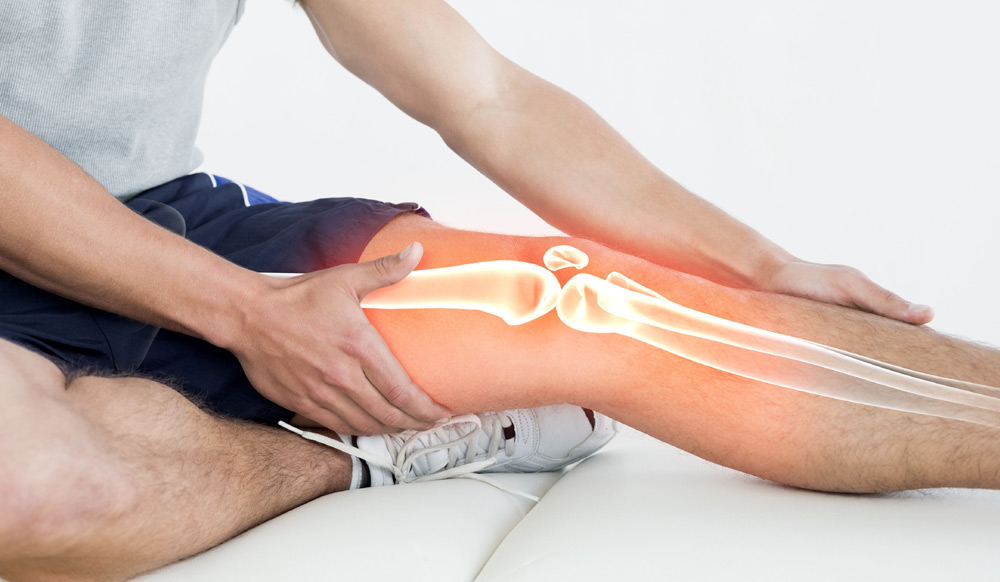The knee is an integral joint in terms of movement, but this joint absorbs much impact while it supports the weight of the body. Depending on the type of activities that you engage in, the level of impact absorbed by your knee may vary. The knee joint connects the kneecap (the patella) with the second bone in the lower part of the leg (the fibula).
It also connects the shin bone (the tibia) with the thigh bone (the femur). Four ligaments serve to stabilize the joint; these ligaments are known as the Lateral Collateral Ligament, Medial Collateral Ligament, Posterior Cruciate Ligament, and the Anterior Cruciate Ligament.
Understanding Knee Pain
Knee pain is something that countless individuals experience at some point. The term is a broad one that may be used to describe an array of different types of knee problems. Since the intensity and level of severity associated with a particular injury may vary among individuals, getting a professional diagnosis is generally the best way to ensure that proper treatment is implemented.
Many knee injuries occur when people push their bodies past reasonable limits. This kind of oversight can lead to trips, falls, and slips; such mishaps may result in serious problems that require intensive treatment.
After a person has sustained a knee injury, the RICE method is typically recommended. RICE is an acronym for Rest, Ice, Compression, and Elevation, which are all used to assist an individual who has sustained a knee injury.
Sprains and Strains of the Knee
Knowing the difference between a strain and a sprain may be useful when a person has a knee injury. A sprain is generally an injury that happens due to overusing the knee; the ligaments become stretched, and an injured person may become less mobile in general.
Experiencing a sprain is an indication that a person should rest before resuming normal activity. Someone who does not rest could be injured even more. A strain may involve reduced mobility, some pain, cramping, inflammation, and a decrease in proper muscle function.
Inflammation can be painful, and a person who has experienced a minor sprain or strain will likely need to deal with the effects of inflammation. Ice is often used to combat inflammation caused by a knee injury. In cases where inflammation is severe, elevating the leg above the heart is a standard practice. A person who frequently experiences knee inflammation after engaging in activity may need to wear a knee support. A knee support will provide support by compressing the area, and this may help to deal with the inflammation.
When Ligaments Are Damaged
Ligaments connect the bones located within the knee joint. Damage to the ligament may affect stability after first affecting mobility. The knee may become less and less capable of sustaining a normal amount of weight.
Damage to a knee ligament is graded according to degrees (from one to three). An injury that is a grade one will be painful, and it will impose some limits in regard to mobility. After an individual rests the knee for a certain time and performs exercises of strength, a full recovery is likely. A grade three rupture or tear will likely require some surgery before an individual may gain full use of the knee again.
The Anterior Cruciate Ligament is typically involved in 40% of knee injuries sustained after playing extreme sports. A person who sustains a knee injury such as this may wish to wear a knee brace that is rigid. A rigid knee brace may help to keep the knee stabilized.
Osteoarthritis and the Knee
The knee may also experience osteoarthritis (OA). This condition involves degradation of the cartilage in the joint itself, and it may limit mobility. The condition can also become quite painful.
When the cartilage degrades, bone makes contact with bone – this is what causes such intense pain for many people. Even ordinary tasks may become difficult to do. OA is not an uncommon problem for people who have sustained wear and tear on the knee for many years. Any person who sustains an Anterior Cruciate Ligament injury could be 50% more likely to experience OA within the span of a 10-year period. Other factors that may lead to this condition include genetic predisposition and body weight.
A person who suspects that OA could be an issue should consult a professional – early detection and treatment may be key aspects of managing the condition.


Recent Comments